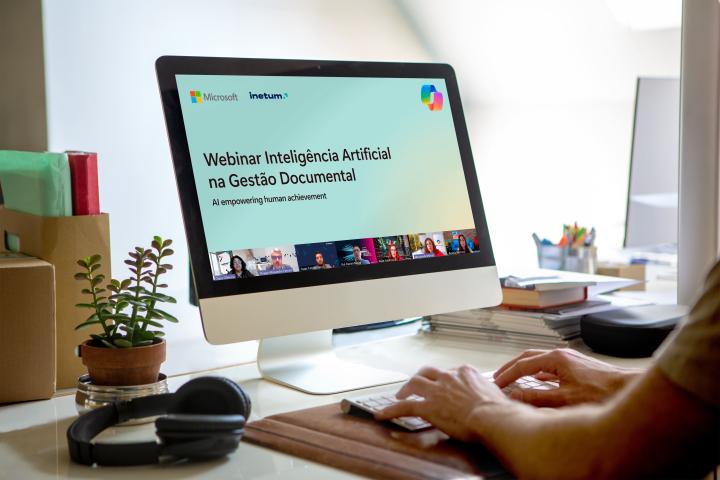Microsoft 365 Tenant-to-Tenant Migration
Microsoft 365 Tenant-to-Tenant Migration
ITcheckers
A merger, acquisition, carve-out, or even a simple name change—there are several scenarios that may require you to migrate an existing Microsoft 365 tenant to a new tenant. What such a migration process entails—and the role Inetum plays in it—is explained by Technology Expert Nicke Hulpiau.
Creation date :
When you choose a Microsoft 365 product, you are allocated a specific space in Microsoft’s data center on the Windows Azure cloud platform. Within this space resides the environment where all your Microsoft online services are stored: a Microsoft 365 tenant. “Essentially, this is a complete ecosystem of Microsoft services and applications, including Exchange, OneDrive, SharePoint, Teams, and more,” says Nicke Hulpiau.
Consolidating Tenants
In the case of a merger between two companies or an acquisition of one company by another, a situation arises where the newly formed entity has two Microsoft 365 tenants—namely, the tenants that existed before the merger or acquisition. Typically, one of these is redundant. The logical next step is to consolidate these two tenants into one. “It makes sense,” says Nicke Hulpiau. “Employees of the new, unified company want to collaborate seamlessly. Access to data, document sharing, chatting, and more are all significantly easier within the same tenant.”
Beyond this business rationale, there is often also a straightforward marketing need for such unification. “Two companies with different names that merge will eventually want to present themselves under a single name. However, this is not possible if they remain on separate tenants, as a name is unique and linked to only one tenant. This means there is essentially only one viable option to create a unified external identity: consolidation into a single tenant.”
Various Migration Scenarios
There are several scenarios for successfully executing this consolidation process. “One option is to set up an entirely new tenant and migrate both existing tenants into it. This approach offers several clear advantages. Since you are starting from scratch, all stakeholders within the organization can thoroughly rethink and align policies. Essentially, it creates a level playing field for everyone, providing a clean slate. From a corporate governance perspective, this is often the preferred option, especially in the case of a merger. However, this is also the more expensive approach, as it involves migrating two tenants, which inevitably means more work.”
“The alternative is to retain one of the two tenants as the primary tenant and integrate the other into it. However, this approach makes it more difficult to enforce policies from the old tenant that is being merged into the new one. The tenant that remains usually dominates, while the other is required to adapt.”
Proprietary Migration Framework
When it comes to tenant-to-tenant migrations, preparation is more than half the battle, as Nicke Hulpiau has learned from experience. “We always begin by thoroughly mapping out the customer's application landscape. For each application, we analyze what is currently in use within both the source tenant and the target tenant. This so-called Discovery phase results in a concrete roadmap for the migration process. Naturally, our best practices are integrated into this plan. In addition, we always ensure proper governance. A typical Discovery document can easily run to around seventy pages.”
A migration project involves more than just applications. “Data migration is also critically important,” emphasizes Nicke Hulpiau. “Every application, especially Teams, SharePoint, and OneDrive, contains a significant amount of data. Depending on the volume, transferring this data to the new tenant can be a considerable effort.” To streamline this process for both themselves and their customers, Inetum follows an approach based on the Master User List (MUL) principle. “This approach allows us to minimize the burden on our clients.”
At its core, this methodology is a proprietary migration framework developed by Inetum, consisting of several individual building blocks or modules. “At the heart of this framework is a large Excel file containing all relevant data for both the source and target tenants. We map the source tenant to the target tenant, ensuring that all necessary information is seamlessly transferred.”
Unique Advantages
This migration framework also offers a high degree of flexibility. “For instance, it allows us to work with a wide range of migration tools, meaning our clients are not locked into a single tool,” notes Nicke Hulpiau. “While many companies still rely on a costly migration tool that offers limited flexibility, our approach eliminates the need for clients to purchase expensive software. Additionally, we ensure that all necessary mappings are handled as automatically as possible, regardless of the tool we use.”
The flexibility of Inetum’s approach provides yet another advantage. “We can achieve results that would be difficult or even impossible with expensive migration tools. Consider transferring group chats in Teams, for example, or mapping enterprise applications, including their authentication methods. For large organizations, this is often a major challenge that requires significant time and attention. These applications do not necessarily belong to the Microsoft 365 ecosystem itself, but they must be able to interact with it. We help our customers successfully navigate these complexities.”
Big Bang
Effective collaboration is crucial to the success of an M365 tenant-to-tenant migration. However, the most important factor is that the organization itself remains actively involved, ensuring minimal errors during the actual migration process. “Our client collaborates with us in the Excel file and ultimately decides what will or will not be migrated. This ensures that they maintain oversight of data quality.”
Maintaining quality is critical, as is thorough preparation, particularly in the big bang approach that Nicke Hulpiau and his colleagues generally apply. “There is no real alternative—at some point, you need to make the switch if you do not want to continue working with two tenants.” Inetum prefers to carry out migrations over the weekend. “However, we always ensure that on Monday, if necessary, users can still access their old environment. This guarantees business continuity and minimizes disruption for the client. Thanks to the extensive controls and validations built into our migration framework—as well as the user documentation and guides we provide—we very rarely encounter unexpected issues during a big bang migration.”


